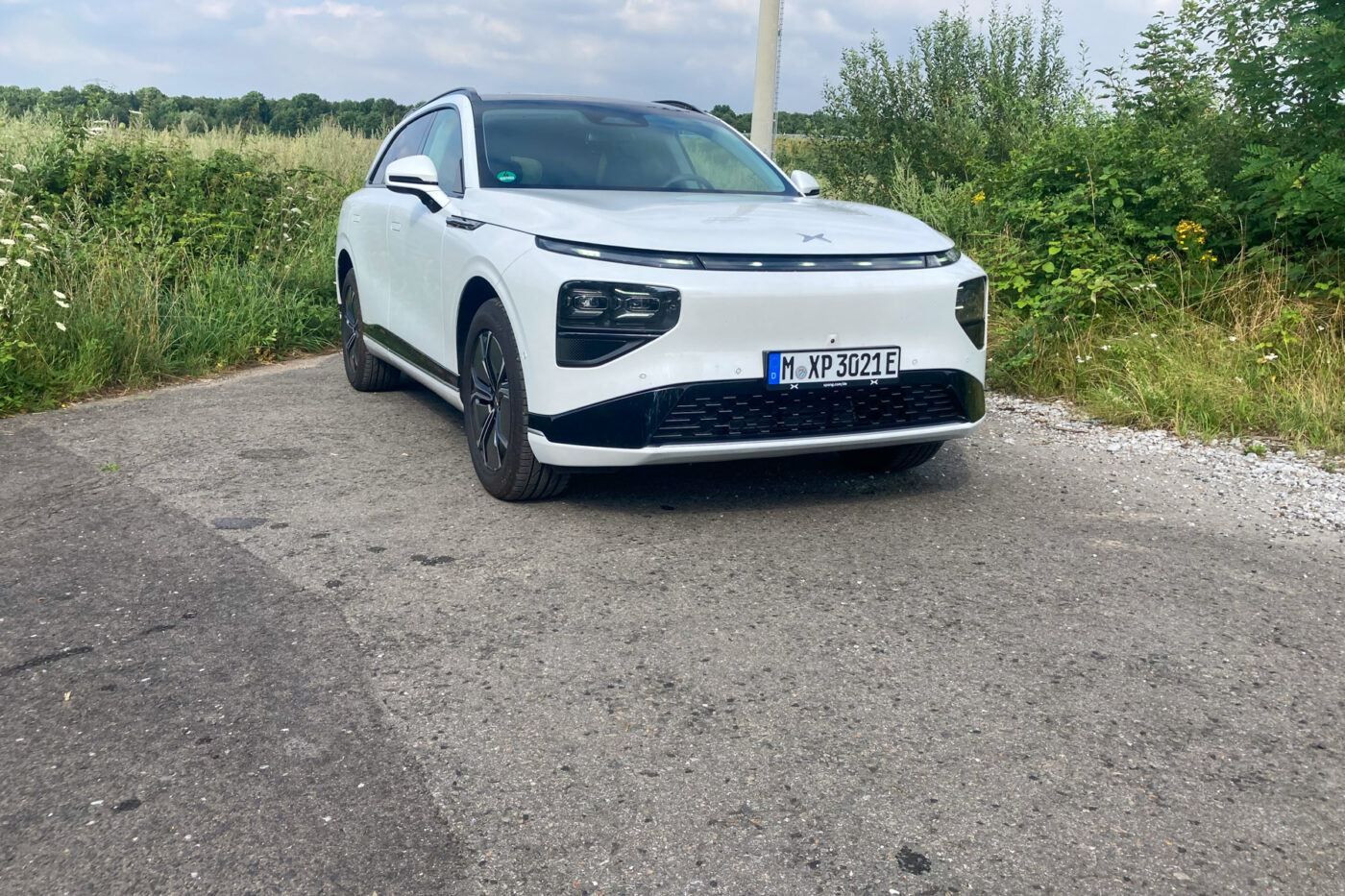
Xpeng G9 in the test: Xpeng has what VW is trying to achieve
It is not uncommon for large corporations to use the expertise of startups—either through project partnerships, participation in financing rounds, or by acquiring the startup outright. In most cases, however, these are young, highly specialised companies and not direct competitors vying for the same customers.
However, VW and Xpeng compete for the same target group: Chinese electric car buyers. That makes it all the more surprising that, as part of the cooperation agreement concluded with Xpeng in 2023, VW intends to develop two new electric models for China in the upper B segment by 2026. It will use Xpeng’s G9 platform for this, among other things.
The G9 is a 4.89-metre-long electric SUV that Xpeng now also offers in Germany. In the upper mid-range, the model offers a 98 kWh battery for a WLTP range of up to 570 kilometres and 800-volt technology for fast charging. With the long-range battery in our test car, the G9 is available from €61,600. With a 78-kWh battery with LFP cells, the SUV is available starting from just 57,600 euros. For comparison, Volkswagen’s significantly smaller ID.4 GTX – with a 77-kWh battery as the largest possible battery – is in the same price region.
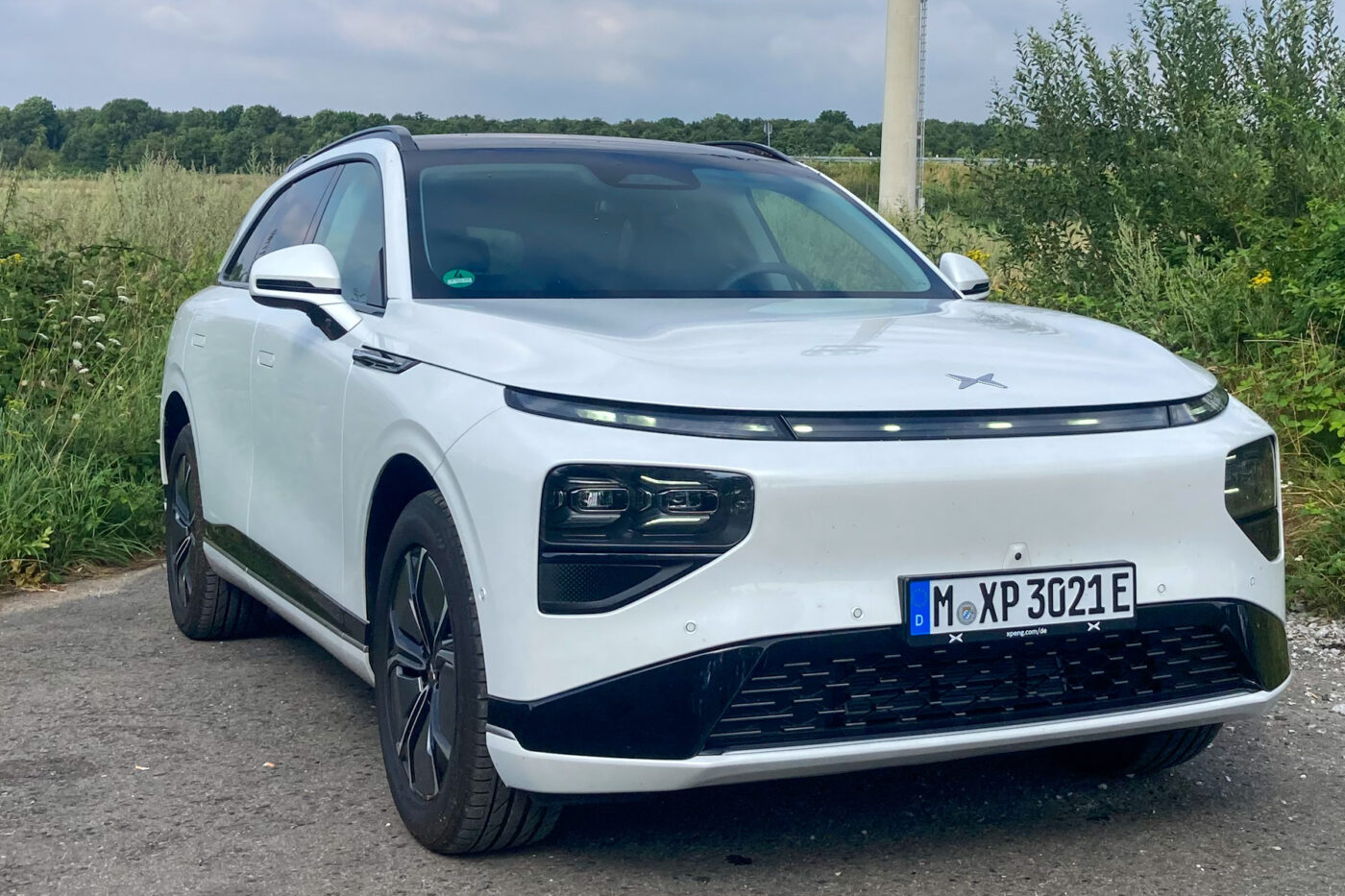
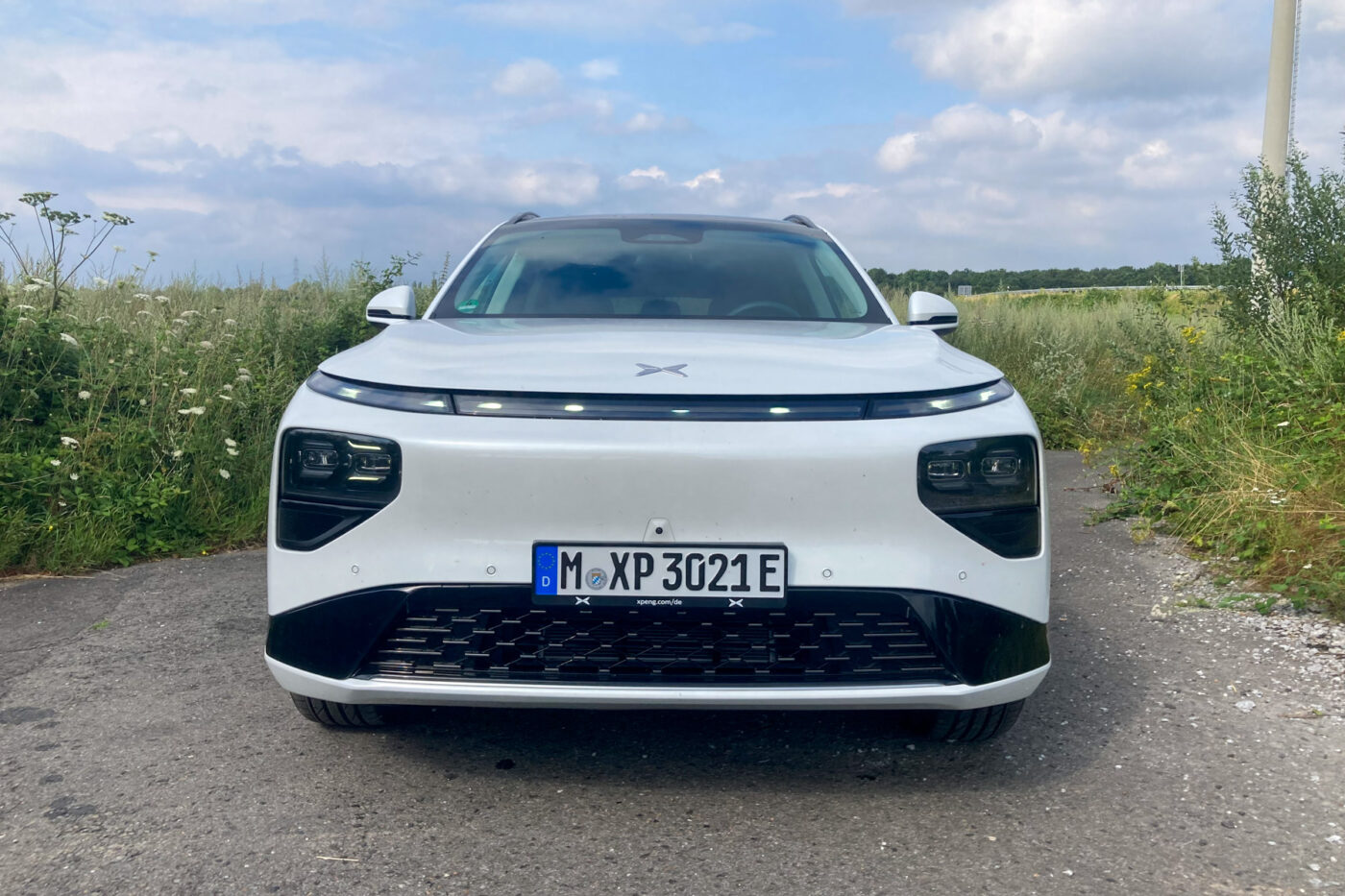
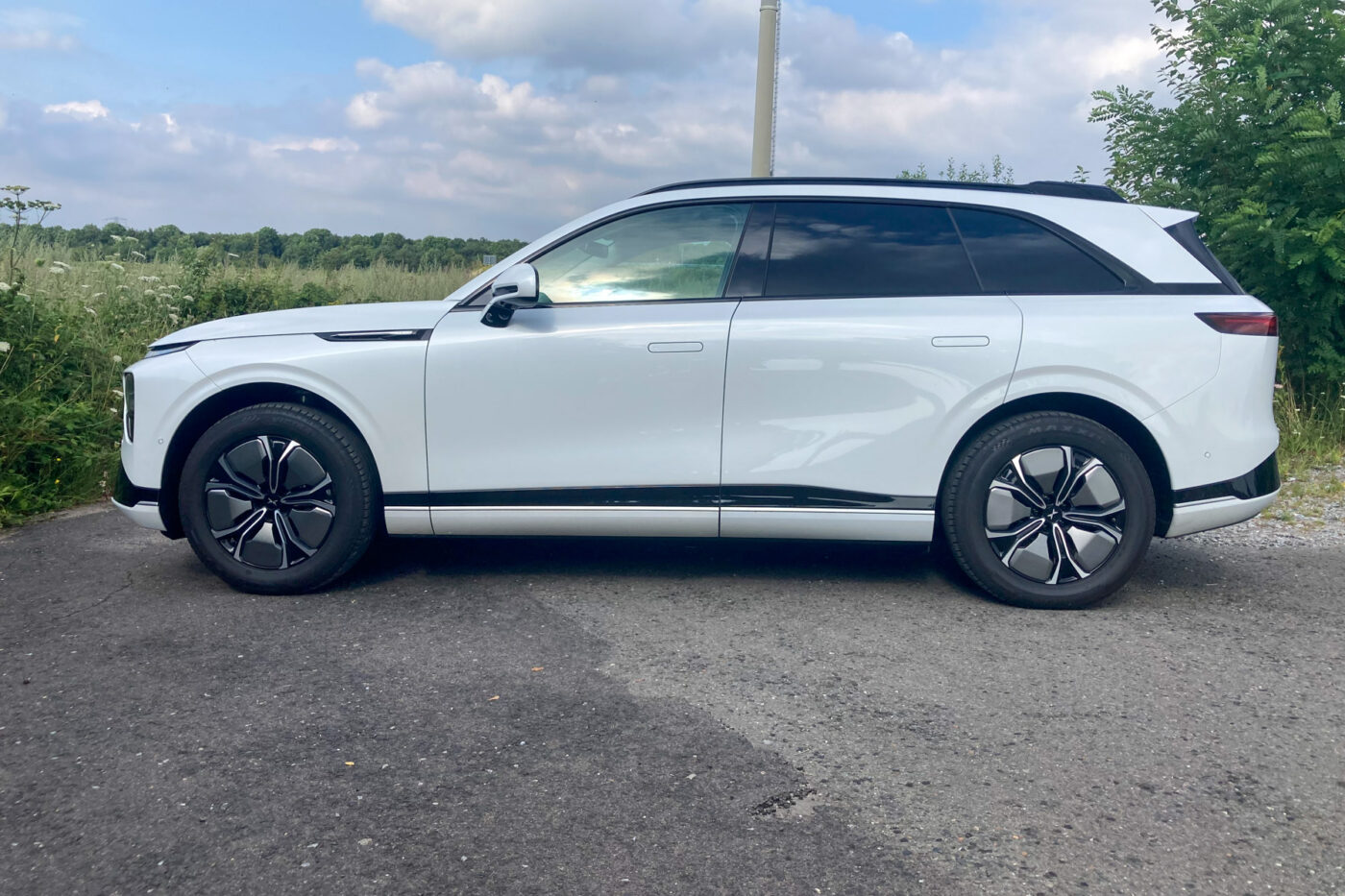
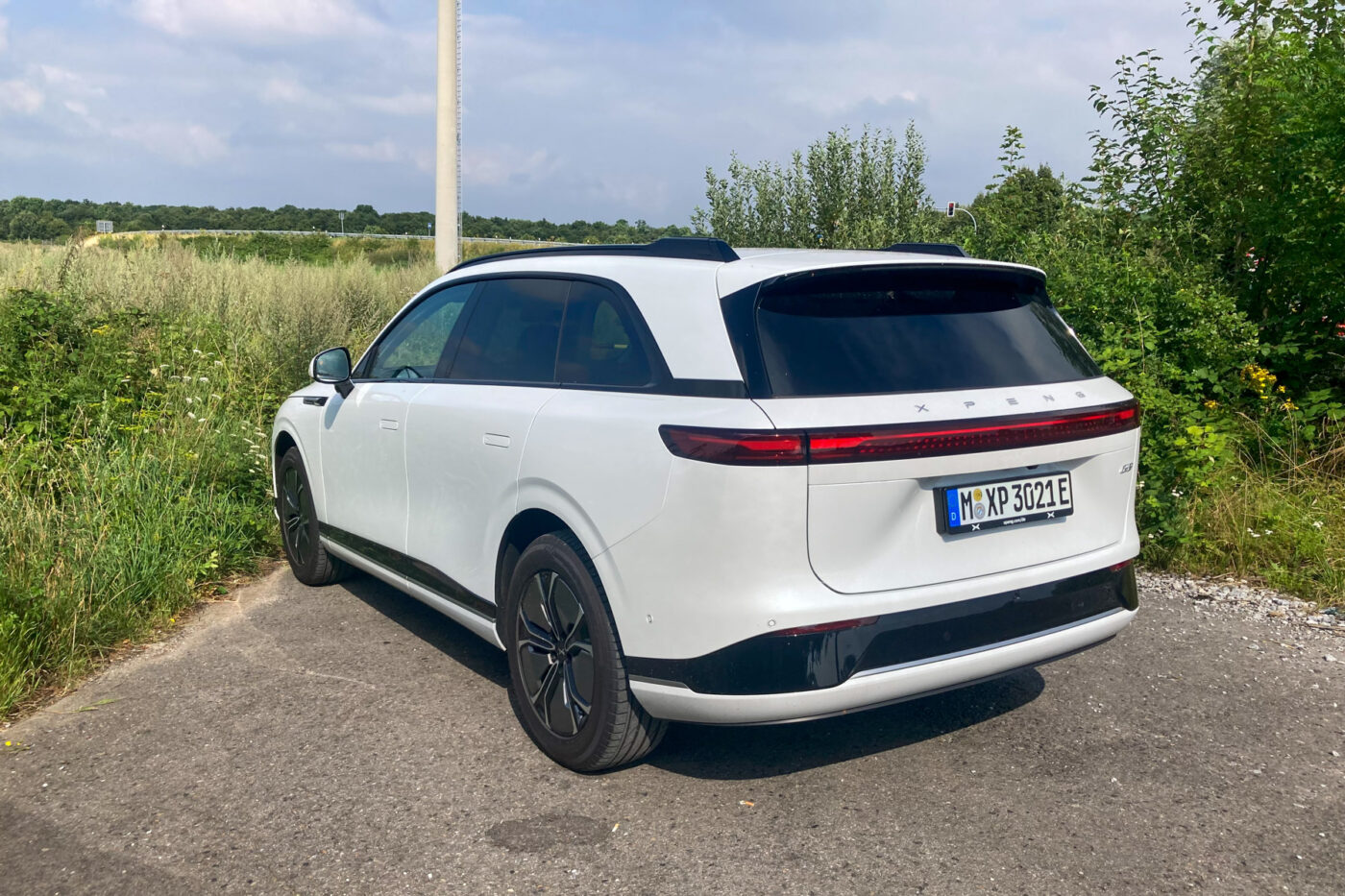
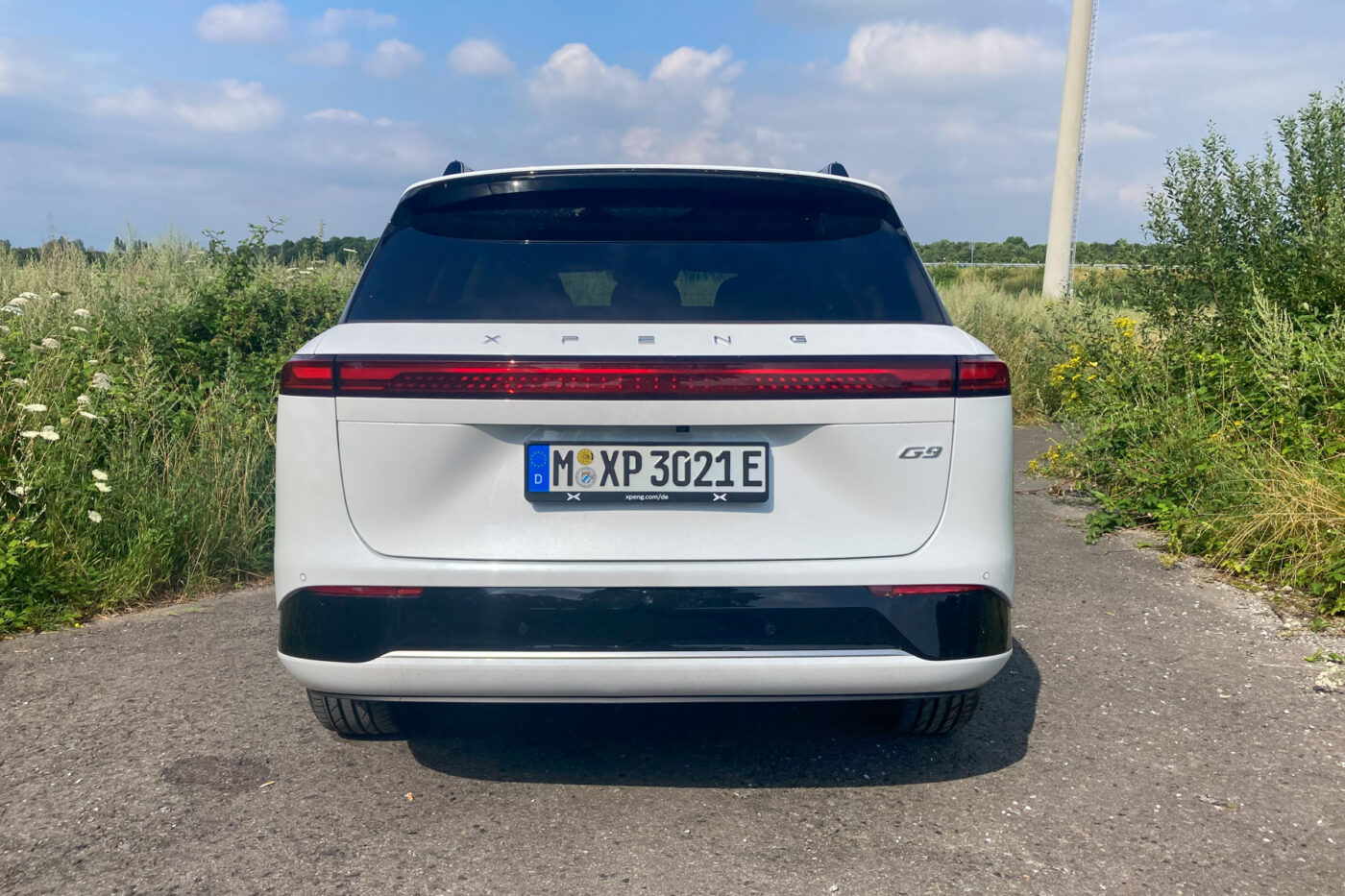
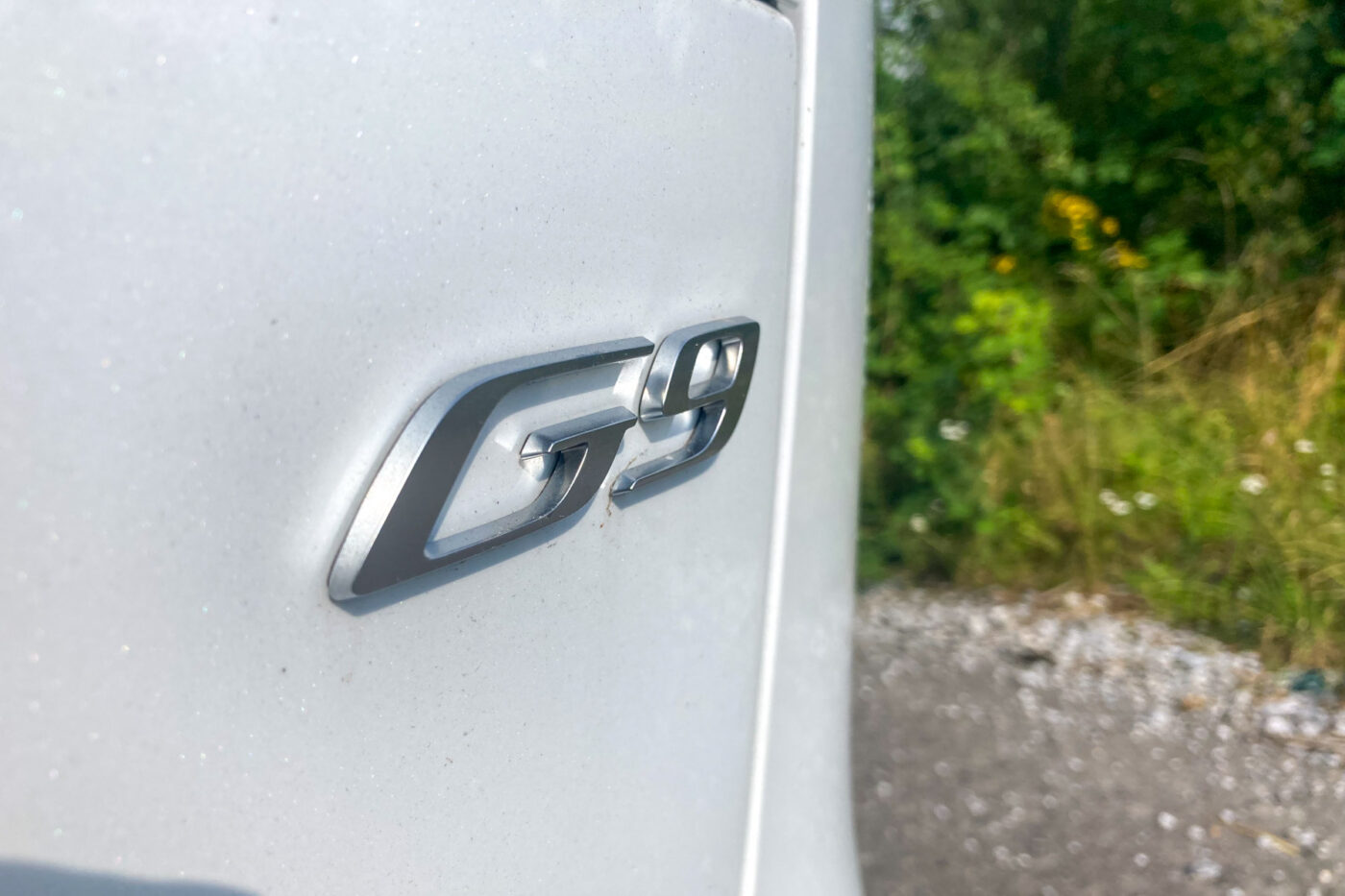
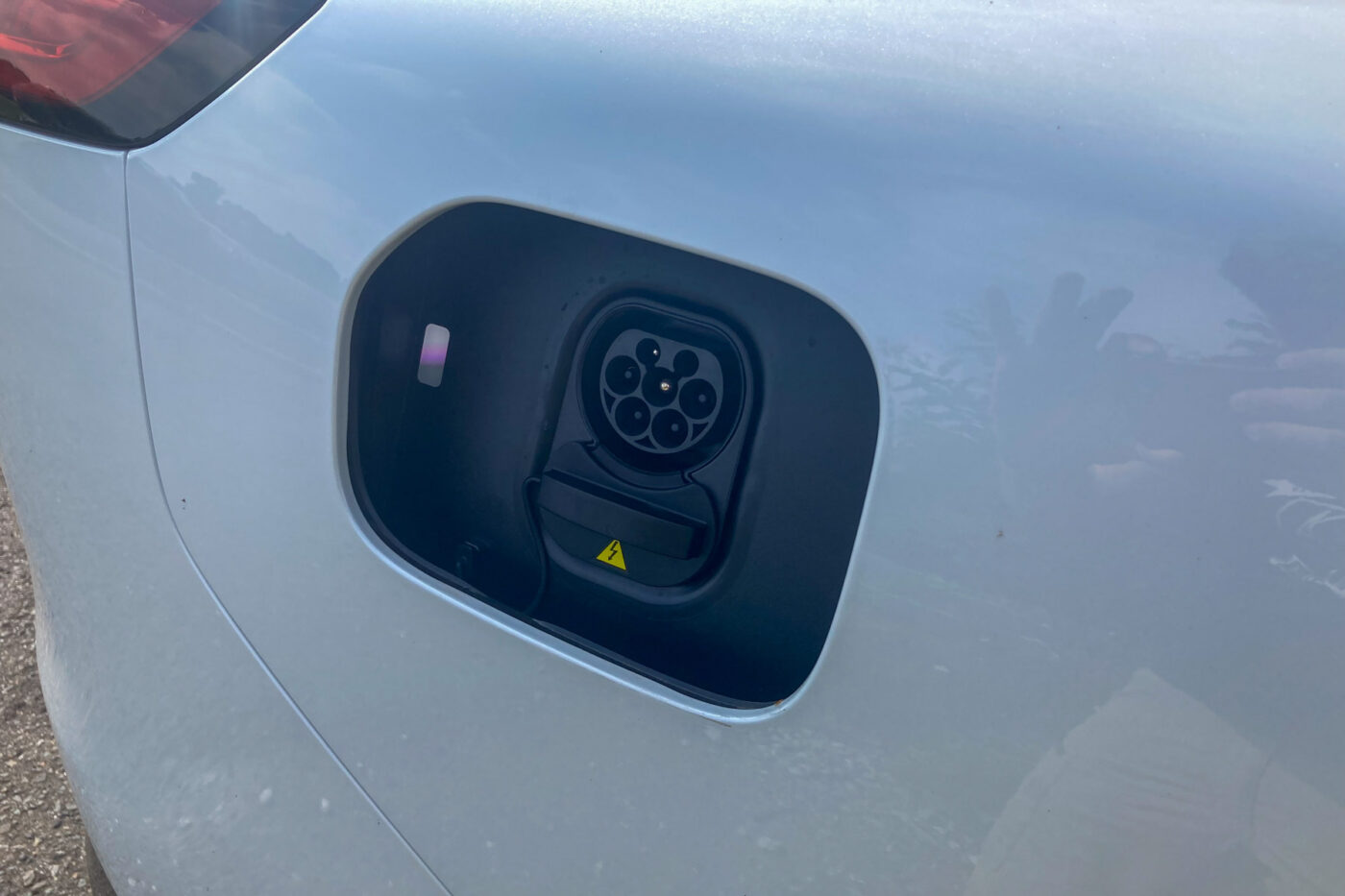
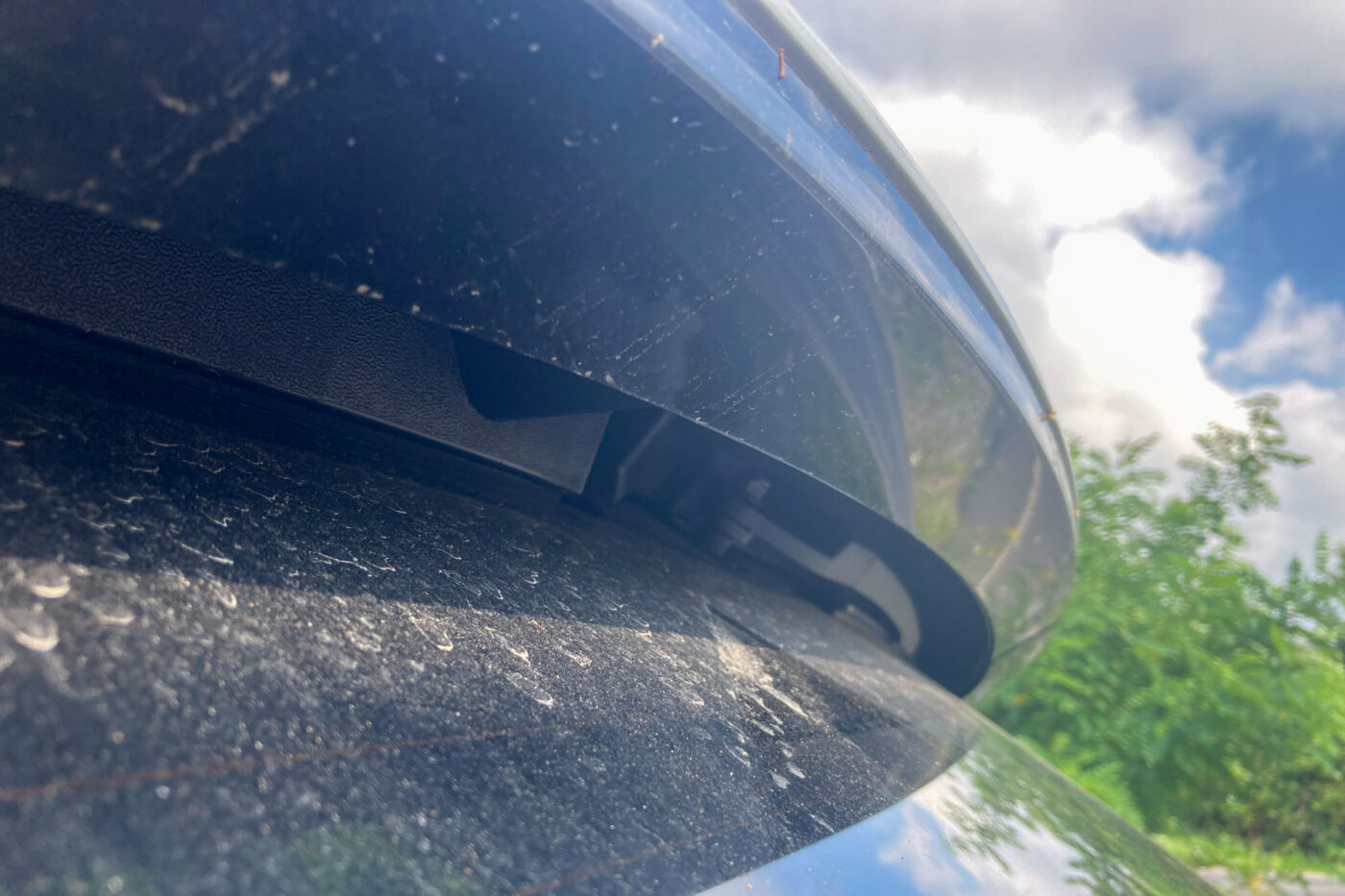
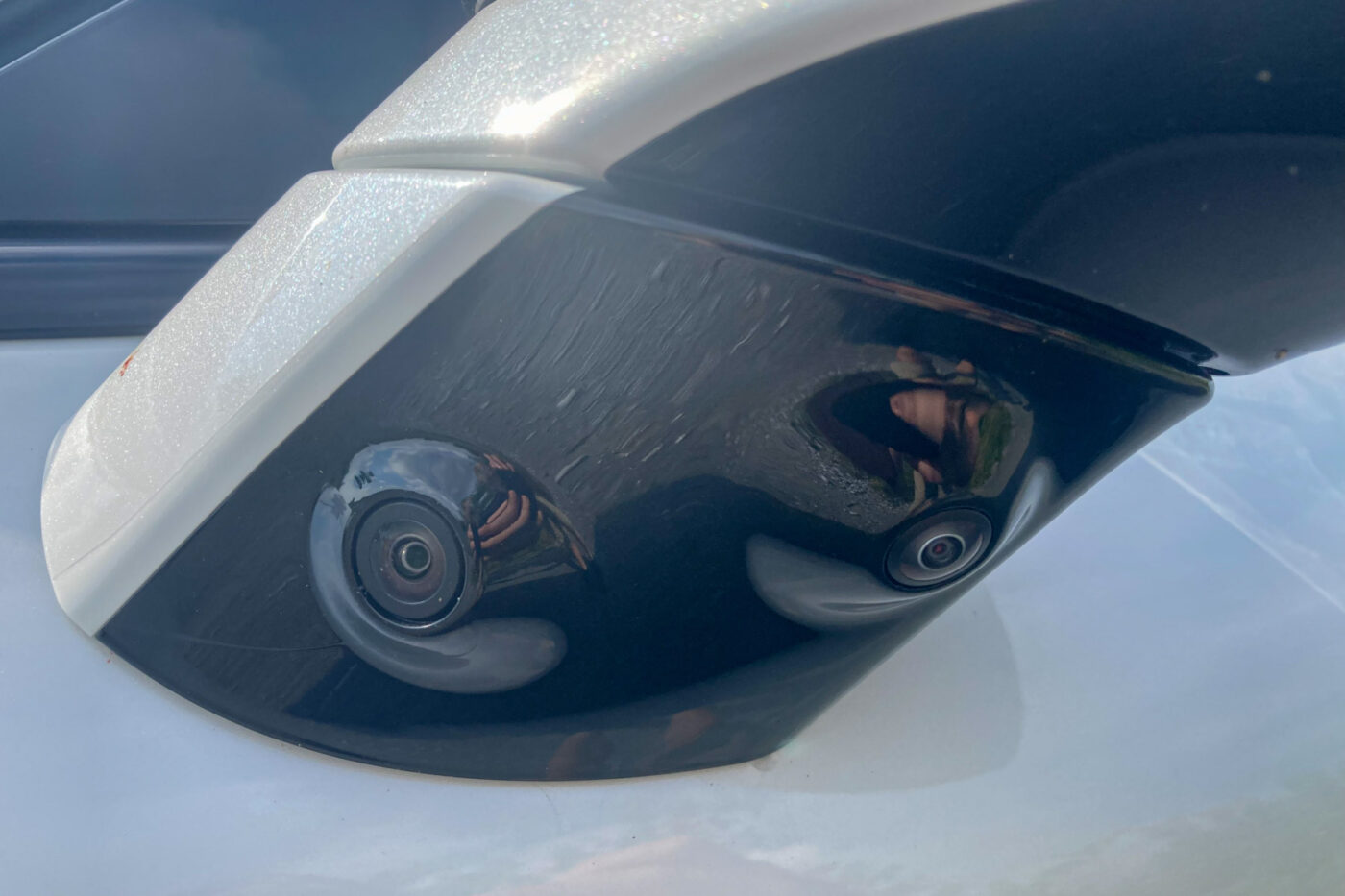
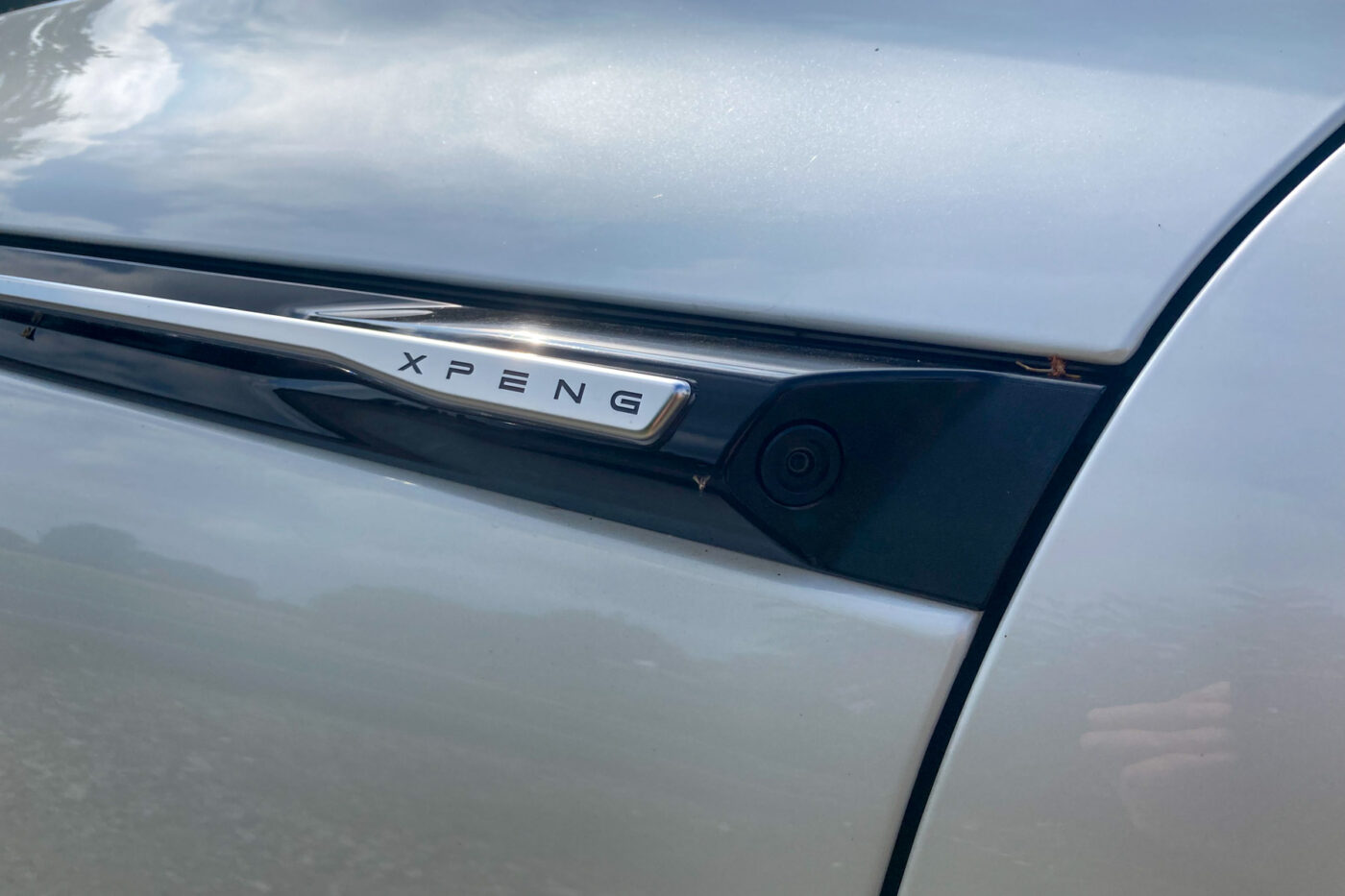
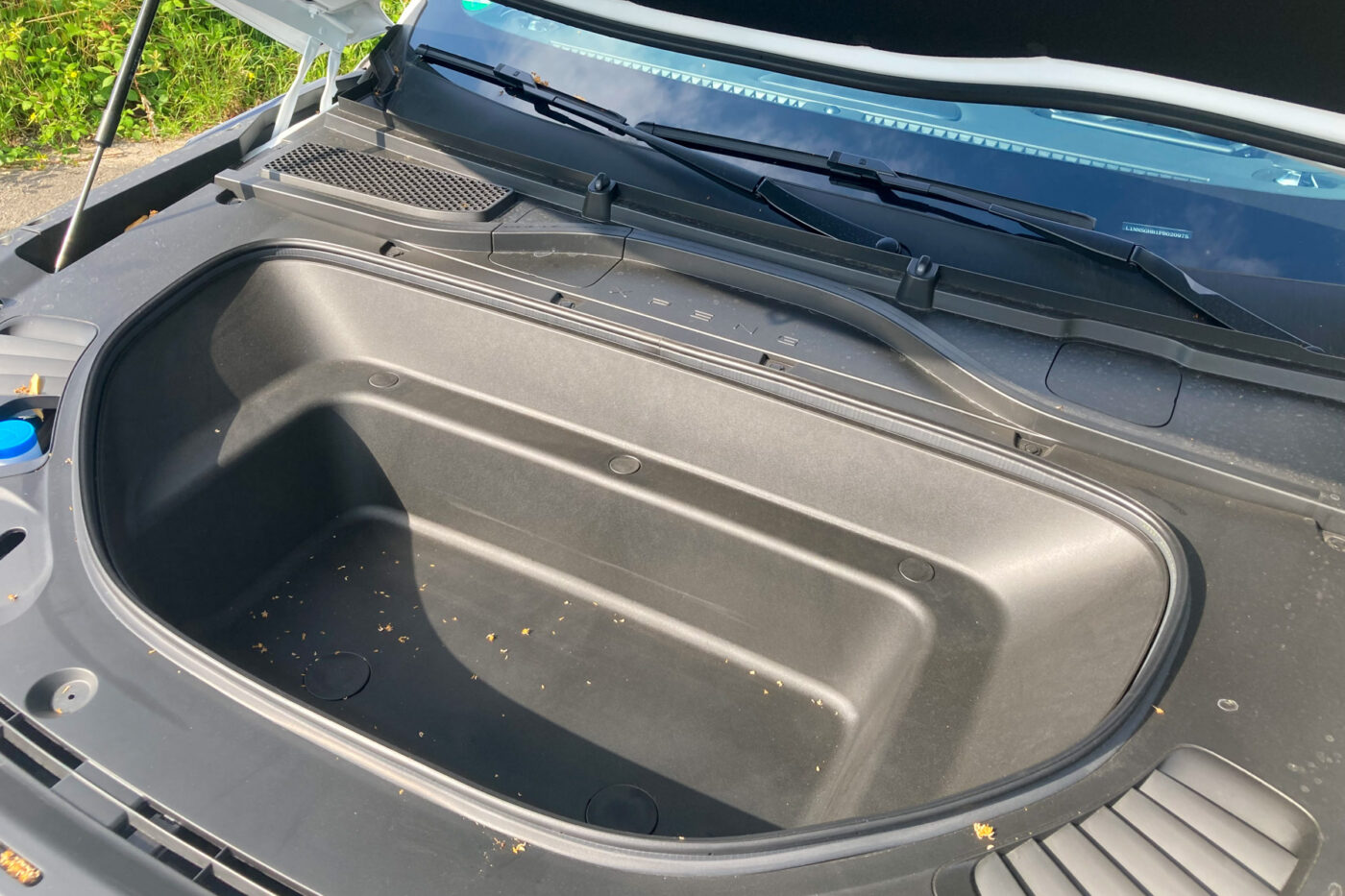
The big difference: while an ID.4, even as a GTX, offers solid but unexciting VW standard equipment in the interior (and is unlikely to create a ‘wow effect’), the Xpeng is different. Three large screens catch the eye, the sound system’s tweeters integrated into the dashboard extend quietly when the vehicle is powered up (something familiar from expensive Audi models, for example), and the seats are incredibly comfortable and cosy. Even though our test car has a plain black interior, it makes an excellent first impression.
However, electrive is not as concerned with the design as with the electric drive. Both the ‘Standard Range’ model with the 78 kWh battery and the ‘Long Range’ of our test car are equipped with a 230 kW rear motor. The 430 Nm torque ensures decent acceleration on request (6.4 seconds to 100 kph), with a top speed of 200 kph. However, these basic values do not reveal how finely tuned the drive is. The three driving modes Eco, Comfort and Sport differ significantly in terms of response behaviour, ranging from rather gentle but precise reactions to the accelerator pedal to immediate but still easily controllable behaviour. We are unable to comment on the all-wheel drive of the 405 kW performance model.
Consumption remains within limits, large battery ensures long-range
There are no negative surprises regarding consumption either. On average, we drove the G9 with 18.9 kWh/100 km despite a high proportion of motorway driving. Depending on the speed, consumption can, of course, exceed 20 kWh/100 km. On the other hand, it was also possible to achieve 15.4 kWh/100km in the on-board computer in the city and on country roads – which, with a usable net energy content of 93.1 kWh, results in a calculated range of more than 600 kilometres. With our test consumption, this is still a generous 493 kilometres. And on the motorway in summer, it should be between 375 and 400 kilometres.
That is good for an electric SUV in this price class. The consumption does not set any standards, but it is more than okay for a vehicle of this size. The Xpeng then benefits from its large battery and thus offers a generous real-world range.
It sets standards for its price class in another area. The G9 is right at the forefront when it comes to fast-charging. Although Xpeng ‘only’ states a maximum charging capacity of 300 kilowatts, we even saw a peak of 320 kW. The G9 cannot maintain this level for long, but then it continues for a while at 270 kW. In our charging test at high outside temperatures, the Xpeng was somewhat exhausted; from around 40 per cent charge level, the charging power in a Hyundai Ioniq 5 (still with the 77.4-kWh battery, not the new 84-kWh battery) or the Kia EV9 with a comparably sized 98-kWh battery is somewhat higher. However, the heat may have played a role in our test, as the charging performance increased again in the 75 to 80 per cent range. The Mercedes EQE SUV, which is the same size but much more expensive, is inferior to the Xpeng at the DC column in all respects.
In addition, unlike a Tesla Model Y, there is no ‘one’ charging curve. If you connect the G9 with an optimally preconditioned battery with a higher charge level, a higher charging capacity is sometimes possible because the battery is not too hot from the 300 kW charge. When we drove to an EnBW hypercharger with a half-full battery in our test, over 200 kW flowed into the battery immediately – the level was maintained for a while. After around 20 minutes, the battery was completely full. A recommendation from the author: make yourself a sandwich at home, because there is no time for an extended break to eat with this charging power. The large storage compartment in the centre console is ideal for this, as it can be cooled. AC charging, on the other hand, takes longer because the EV only has an 11 kW charger. Even for an extra charge, there is no 22 kW on-board charger available, which makes public AC charging rather unattractive with this battery size and the usual blocking fees in many places.
In short, Xpeng delivers an 800-volt system with excellent fast-charging performance and a high real-world range in a price class in which VW can only offer a significantly smaller SUV with a lower range (even if the new electric motor in the ID.4 is quite efficient, as Daniel Bönnighausen’s driving report shows). So you could say that the Xpeng offers what VW is looking for. And if the G9 were built with all the economies of scale of the VW Group, it would probably also be possible to reduce the price.
However, it must also be said that VW has what Xpeng needs in other areas. The assistance systems, for example, were less convincing in our test. The basic functionality is good, although less finely tuned than in other 2024 vehicles. One example of where there is still room for improvement: If you are driving on the motorway with cruise control (and distance control activated at the same time), you are overtaken, and the car changes lanes to merge in front of the Xpeng, the G9 brakes briefly – even though the other car is driving faster and moving away. That causes unnecessary and annoying delays, especially on busy motorways. I admit: after a while I preferred to drive manually without cruise control.
Another point of criticism is probably only relevant in Germany: Cruise control only works up to 130 kph. That would be bearable, but the way in which the system deactivates at 130 kph is not. A beep and a (red) flashing light indicating that the driver is now in control again would be sufficient. Instead, the G9 also activates the belt tensioner and jerks there several times – it initially feels like a major problem or an imminent emergency stop. Yes, it is important to communicate clearly when the car still intervenes in the driving system and when it does not. However, activating the belt tensioner on the motorway is (by German standards) quite excessive.
We noticed a small, not entirely well-thought-out detail around the cruise control. The system is activated like in a Tesla: If the steering column lever for gear selection is pressed down once while driving, cruise control is activated; if it is pressed twice, the lane-keeping function is activated. In the Tesla, the steering column lever is to the right of the steering wheel. In the G9, however, the speed is selected using the rotary knob on the left-hand side of the steering wheel – the audio controls are on the right. That is more intuitive with Tesla: the right-hand steering column lever and the right-hand rotary wheel are responsible for driving assistance. It’s a better match.
High driving comfort, low noise level
Unfortunately, the fact that speed limits are not recognised reliably enough is still the industry standard. There are only a few vehicles that stand out positively in this respect. The Xpeng feels rather average. When the (alleged) speed limit is exceeded, the beeping can be deactivated via a quick selection menu, but it is necessary to use the touchscreen. The equipment and number of assistants in the G9 is impressive, some of them work well – but many are not perfect. How practical that partner VW has developed a very good system with its ‘Travel Assist with swarm data.’ Xpeng may thus also benefit from VW technology.
Once you have come to terms with the assistants or deactivated them, the G9 is a comfortable and cleanly tuned car. The suspension is rather softly tuned, and on the motorway, the Xpeng is an enjoyable long-distance car – the good insulation also contributes to this; it is relatively quiet in the interior. On bends, of course, the rather comfort-oriented set-up and the kerb weight of 2.4 tonnes come into play, and even in Sport mode the G9 is not an agile sports car. And it is not only the noise level and the solid chassis, but also the materials inside and the quality that bring the G9 closer to the premium manufacturers than to the volume brands.
There is plenty of space: at 1.85 metres, the front and rear are very airy, and two people at 1.95 metres could probably sit very comfortably behind each other – at two metres or more, things could get a little tight in the rear. In a similarly long Mercedes EQE SUV, all five seats are much more cramped.
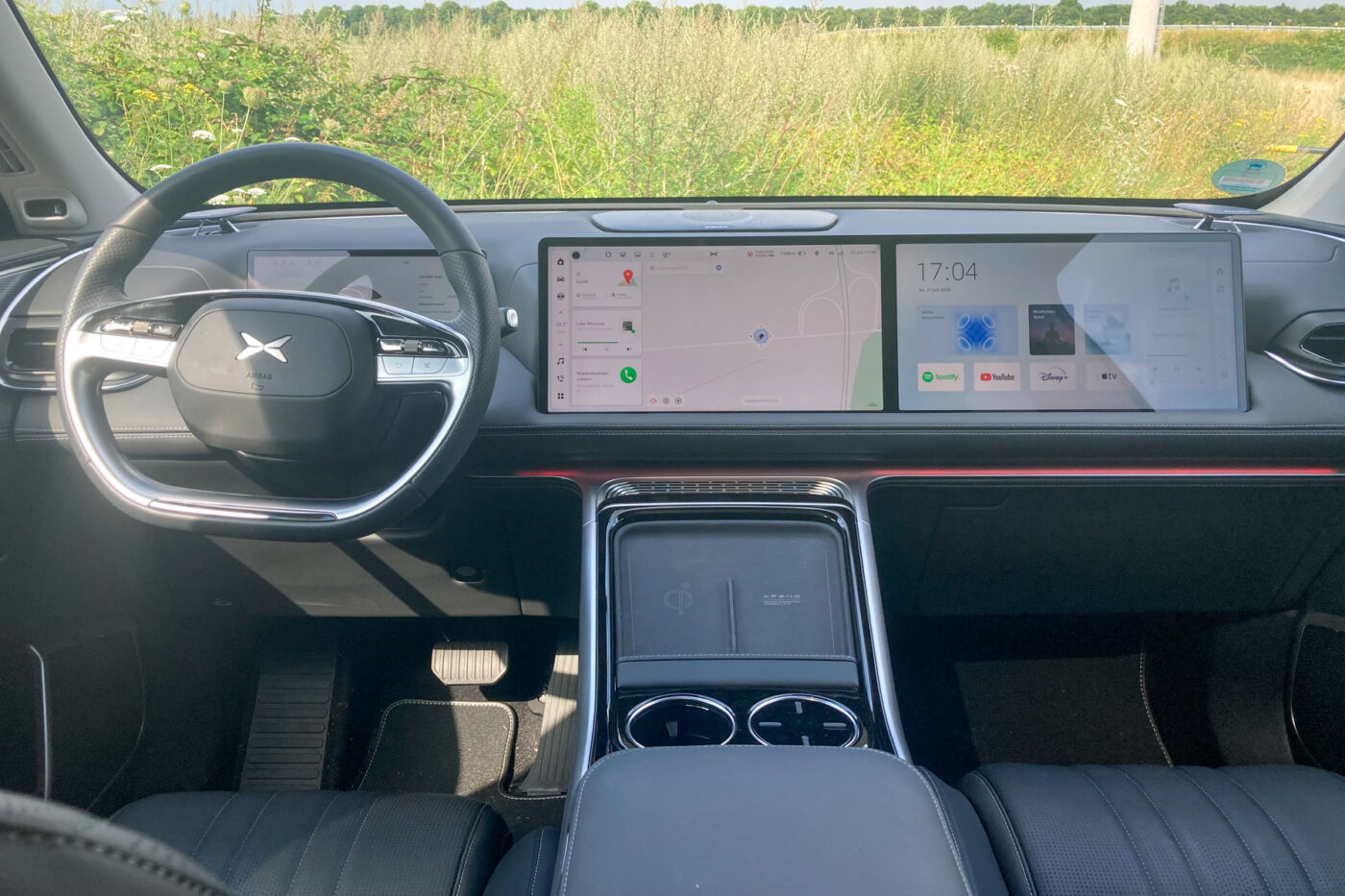
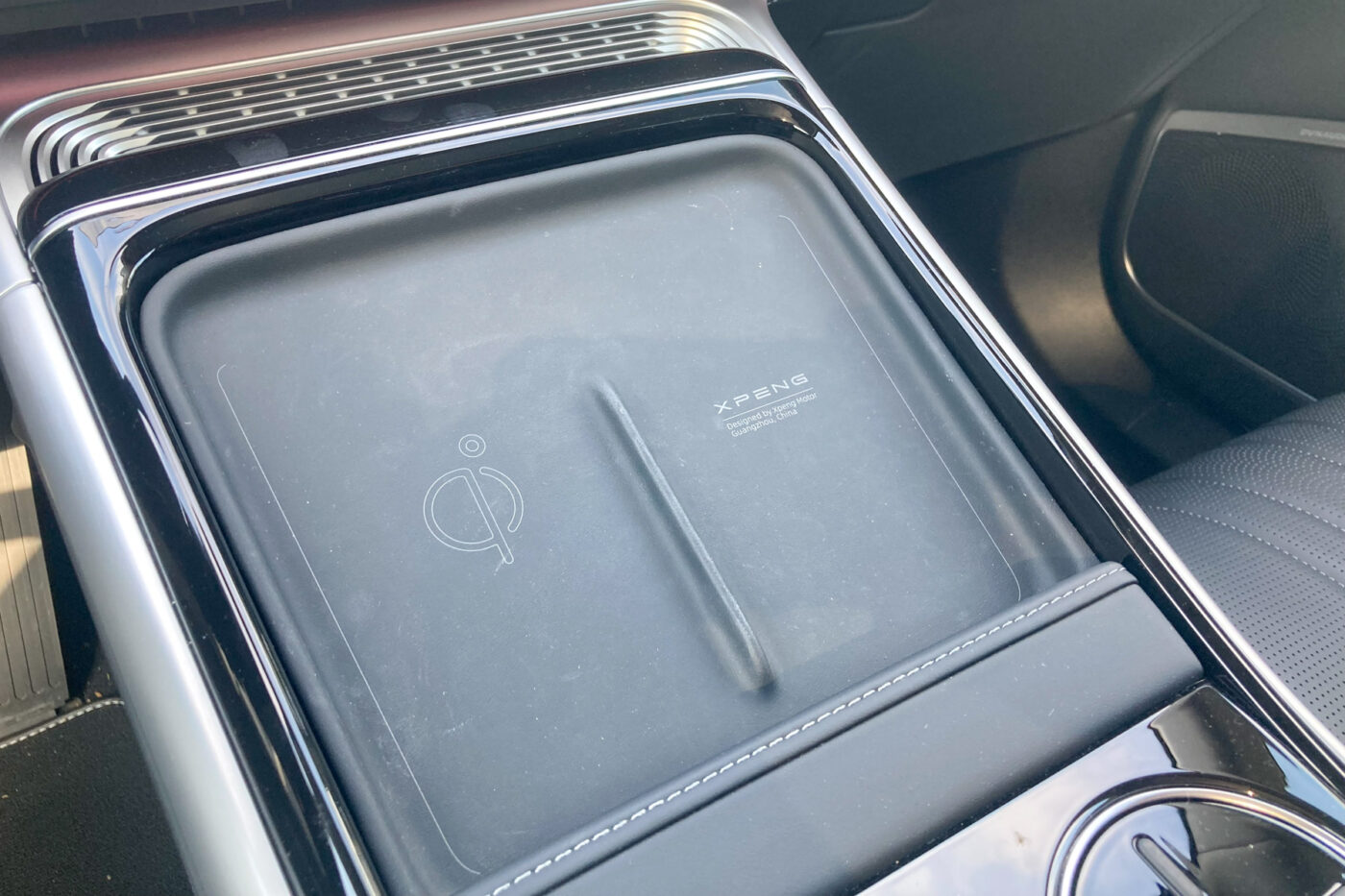
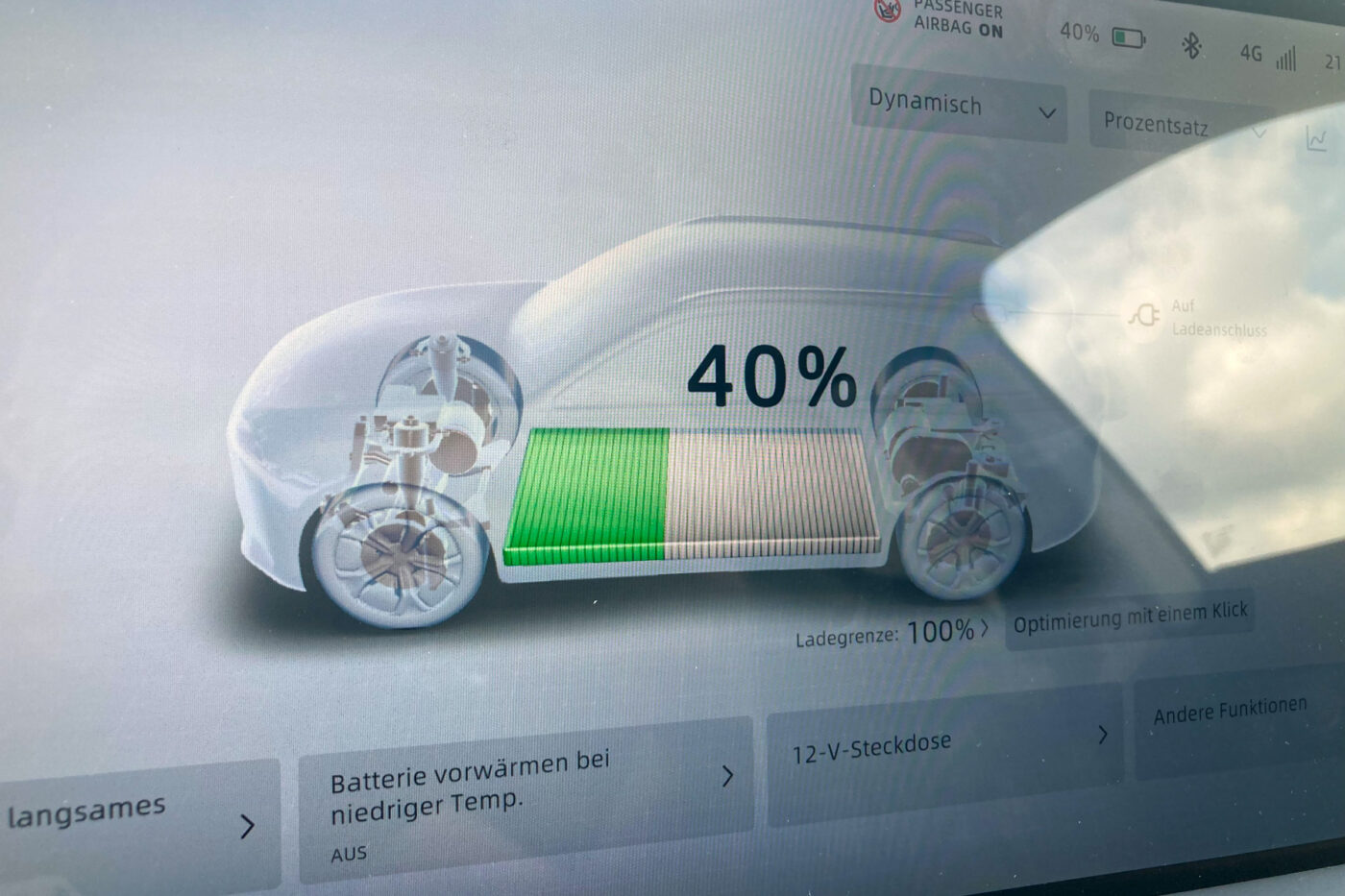
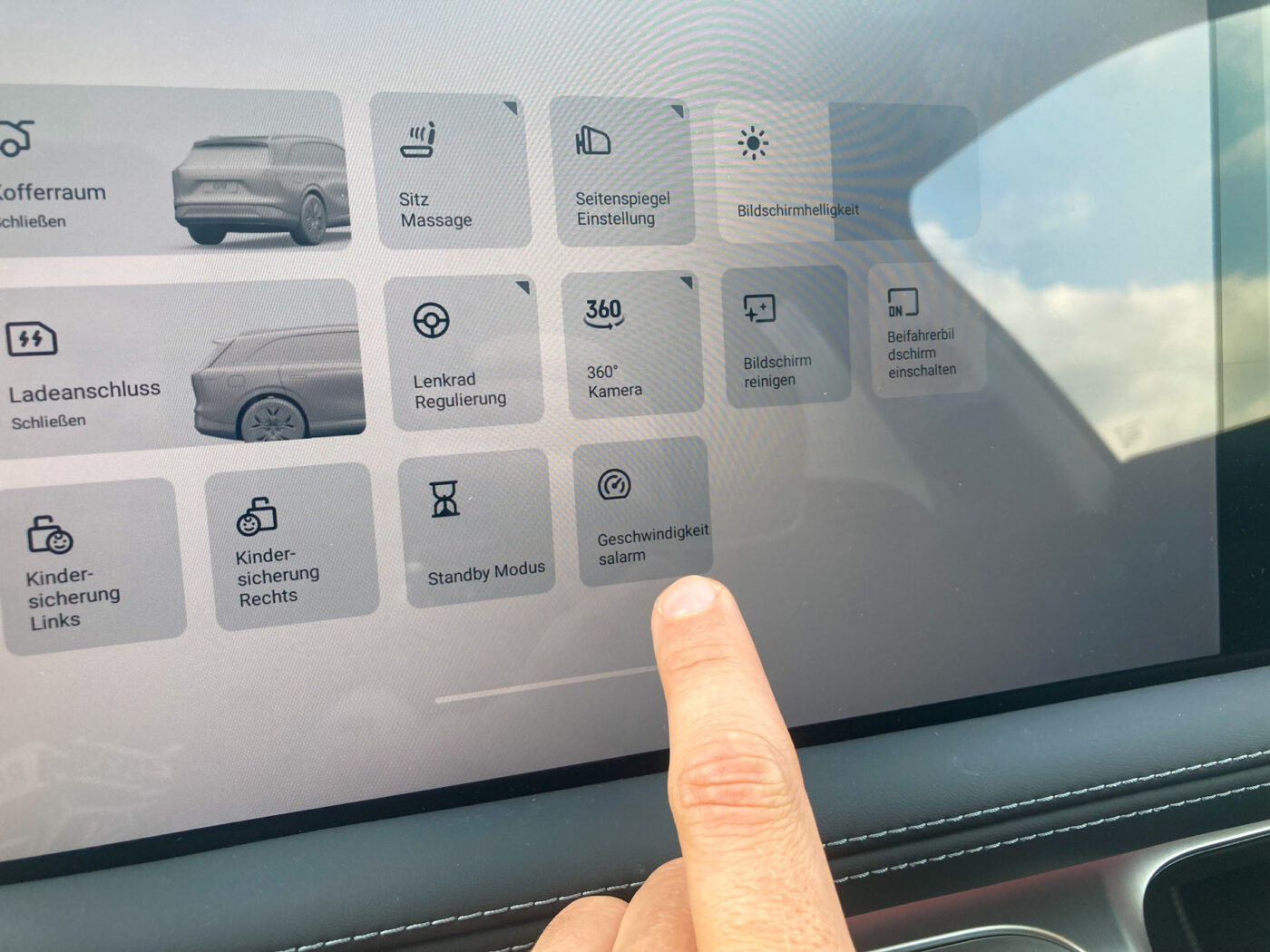
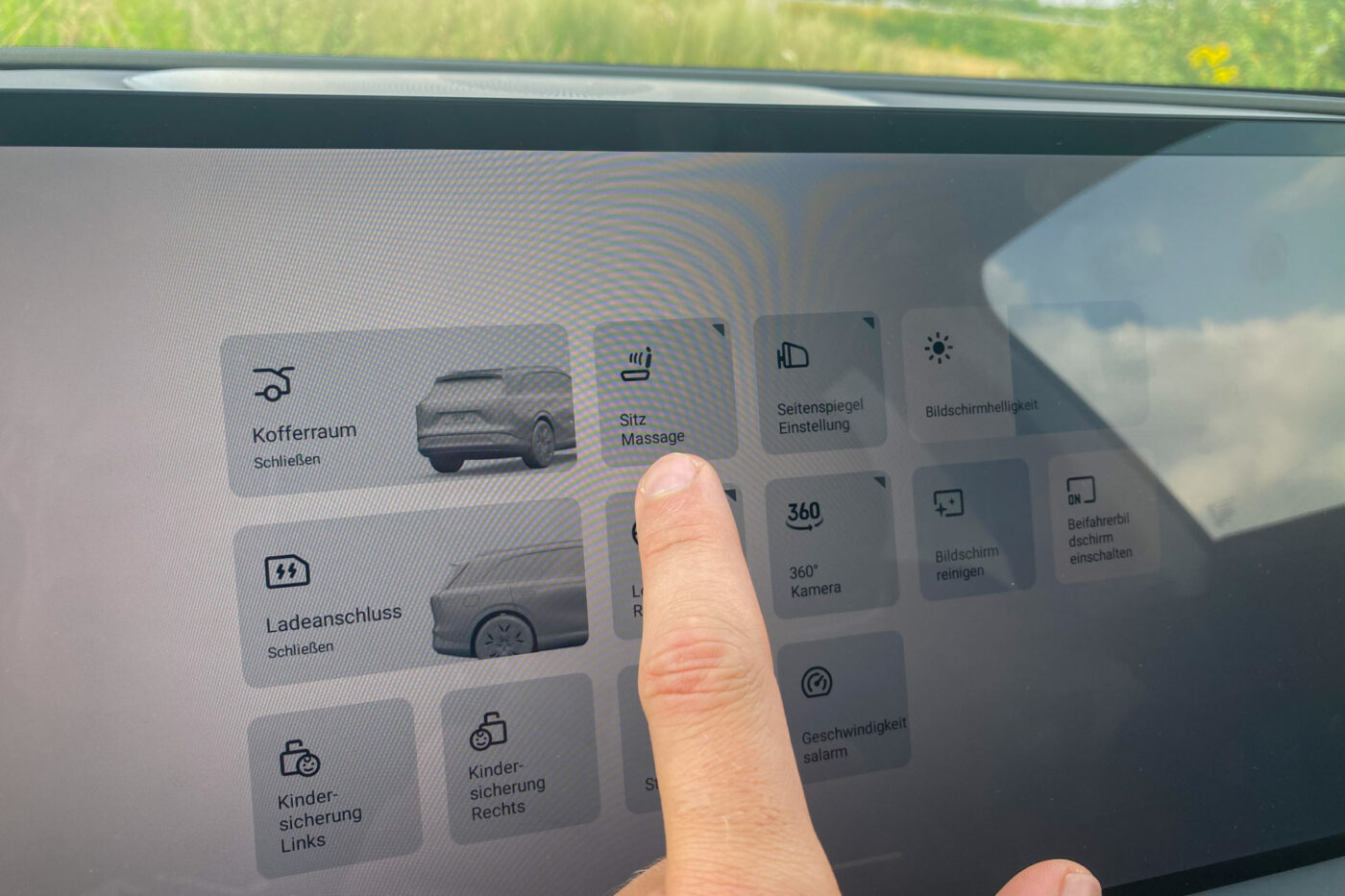
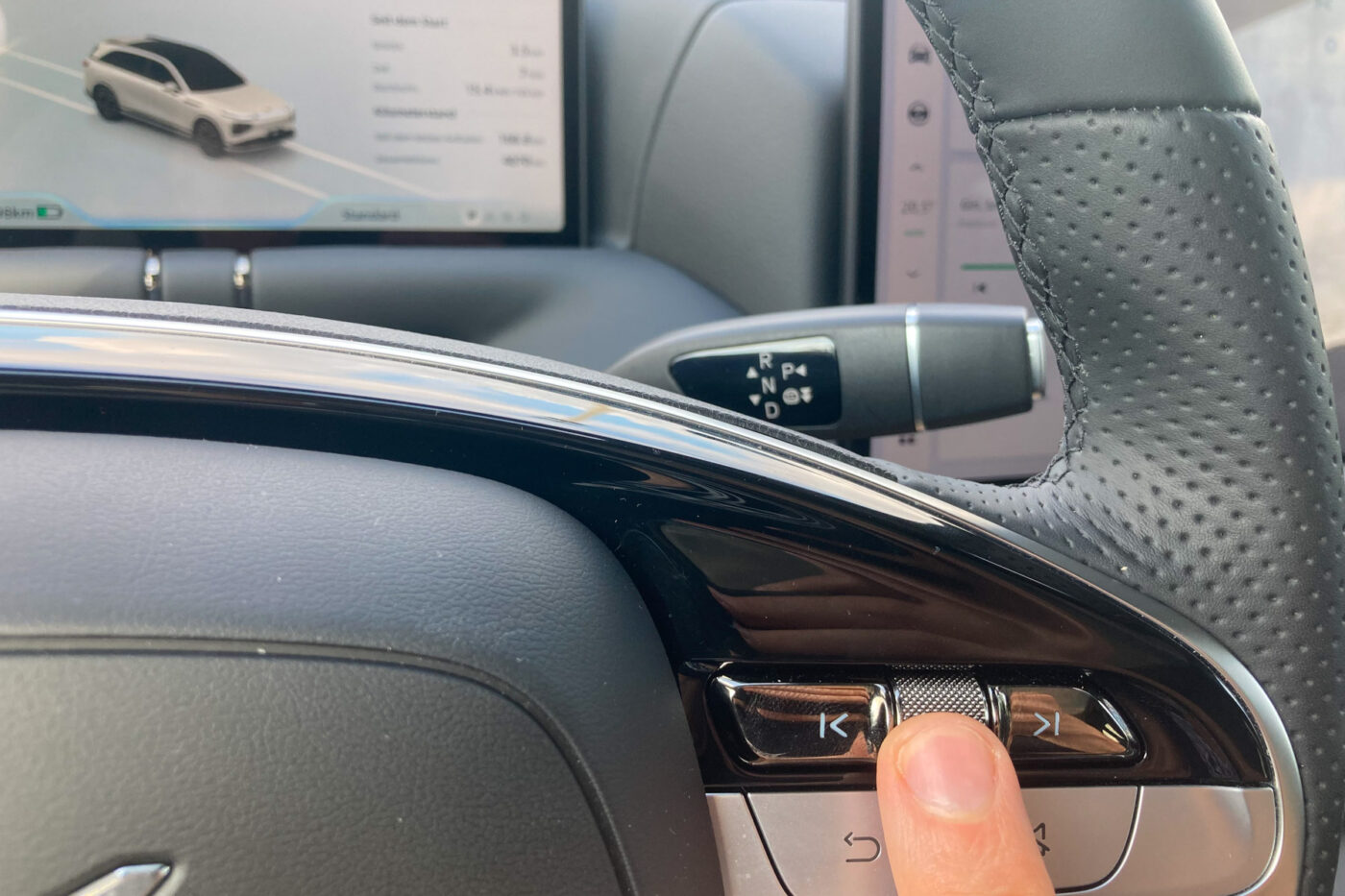
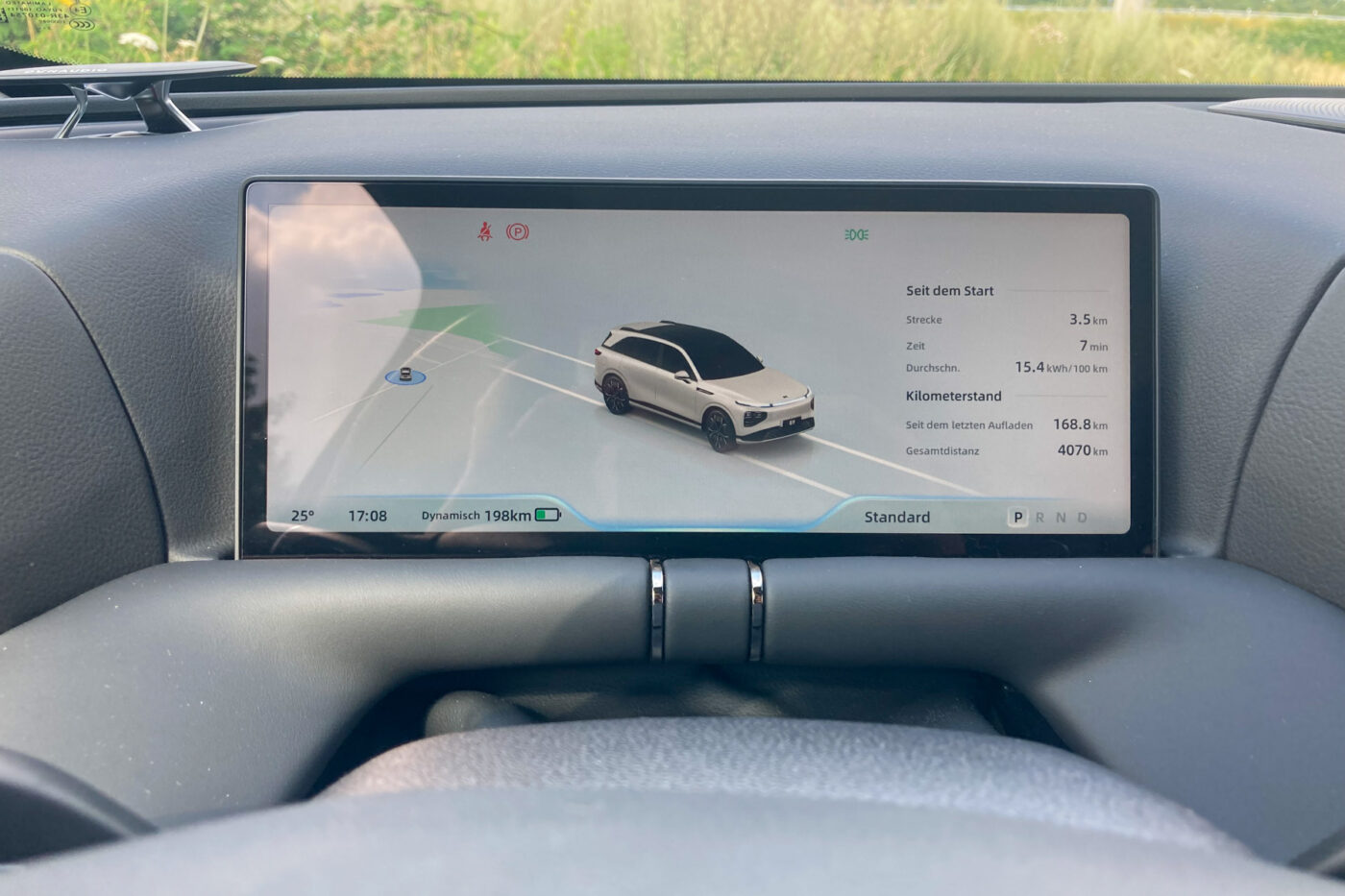
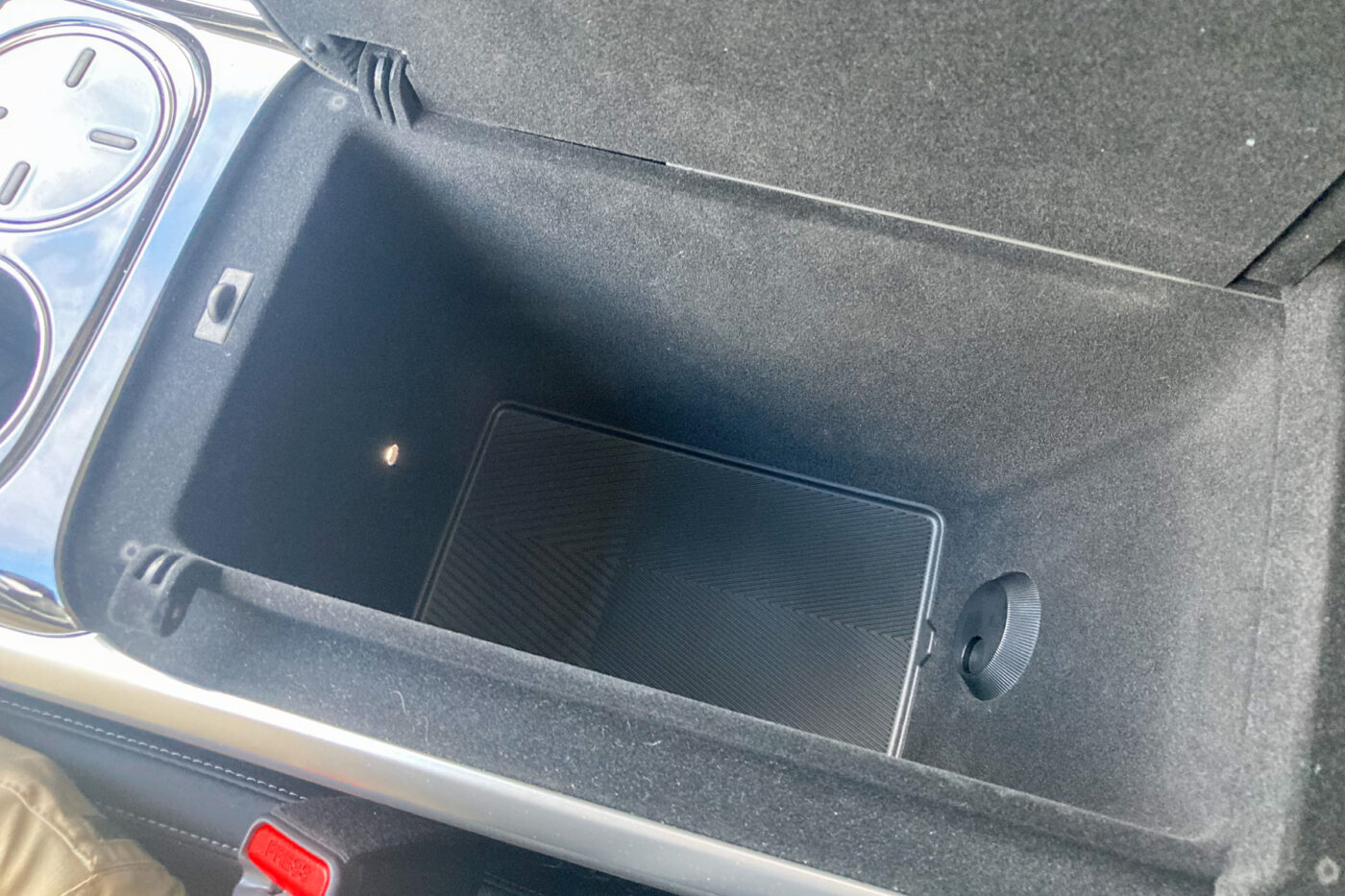
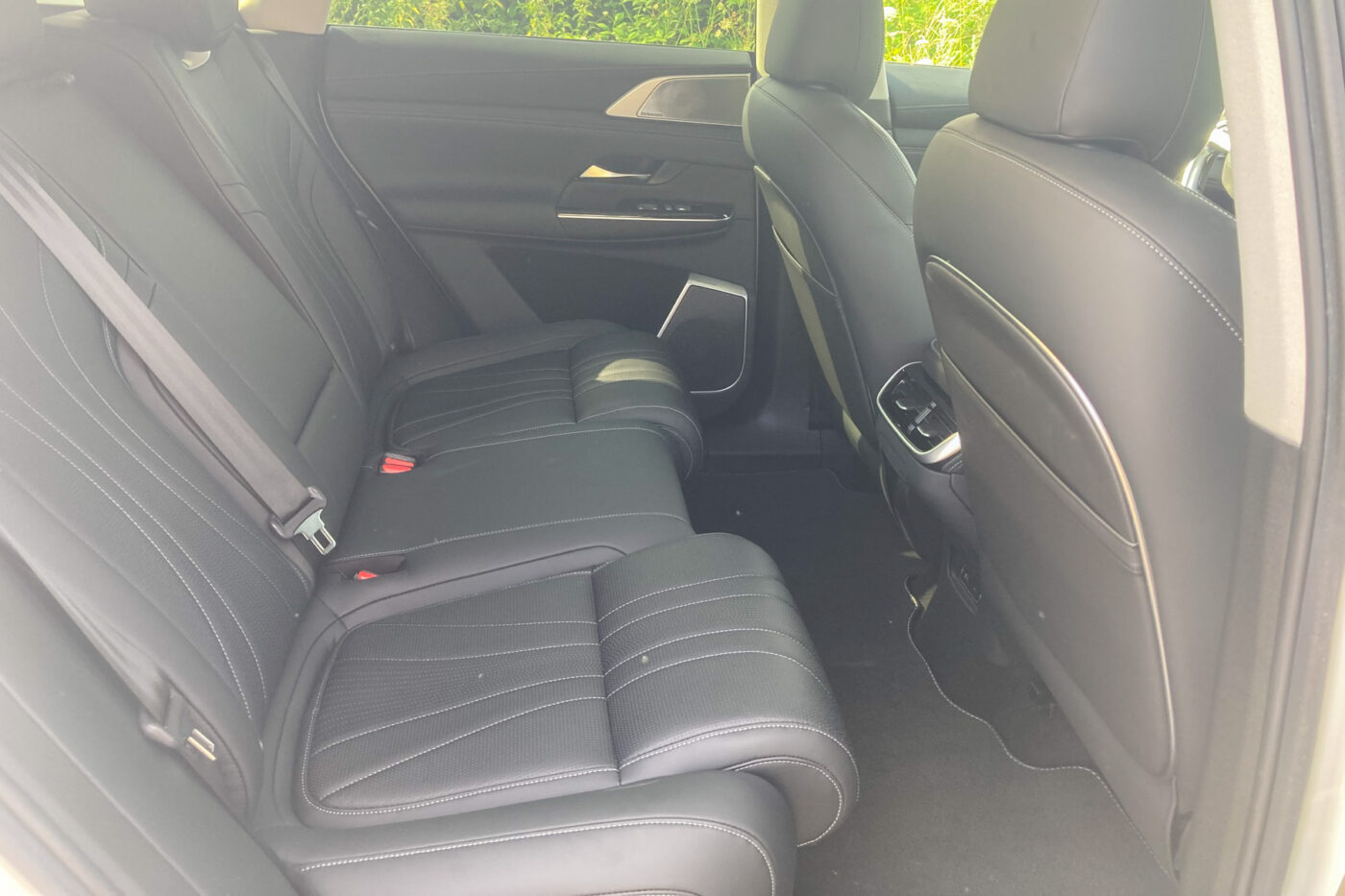
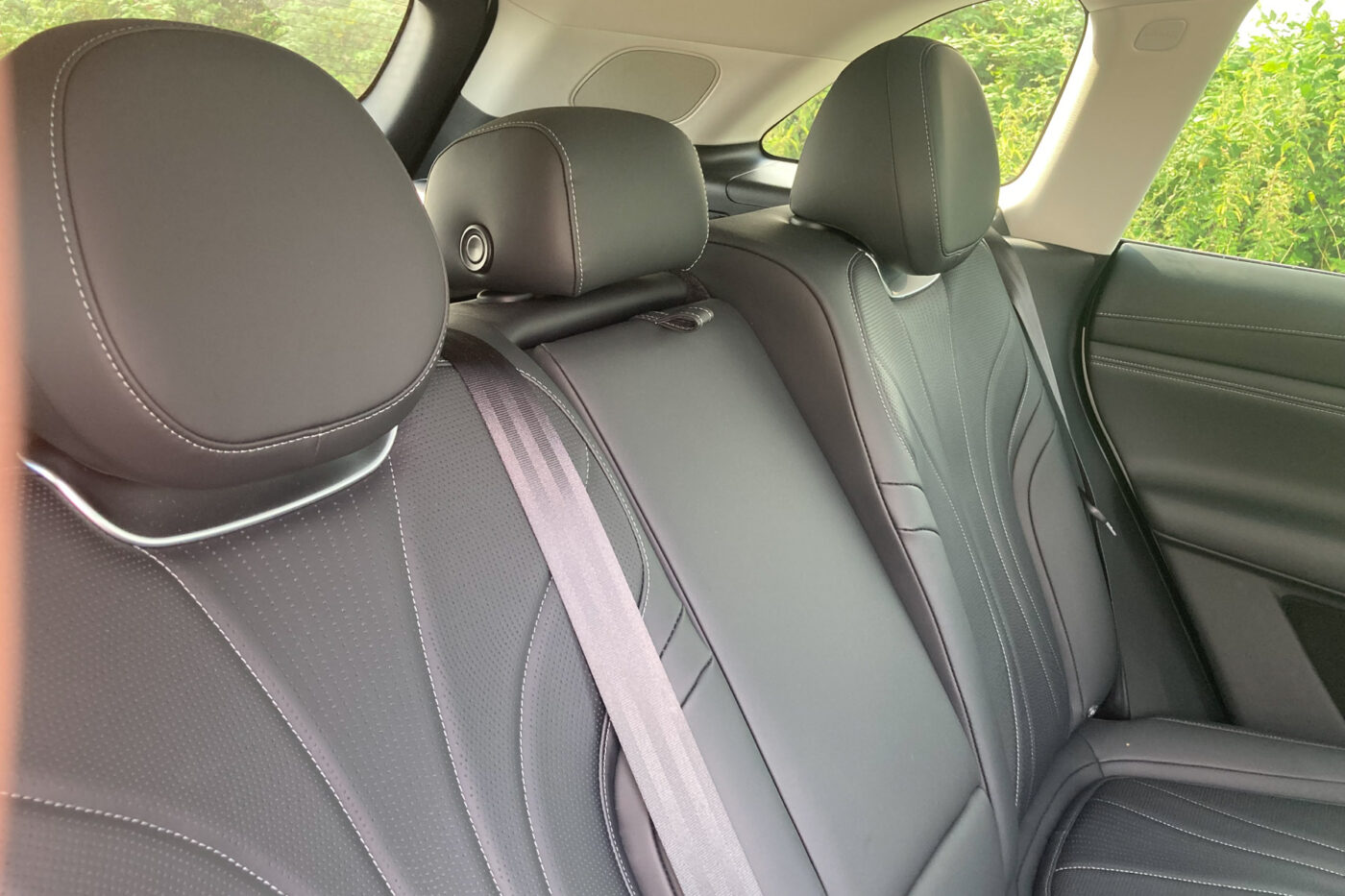
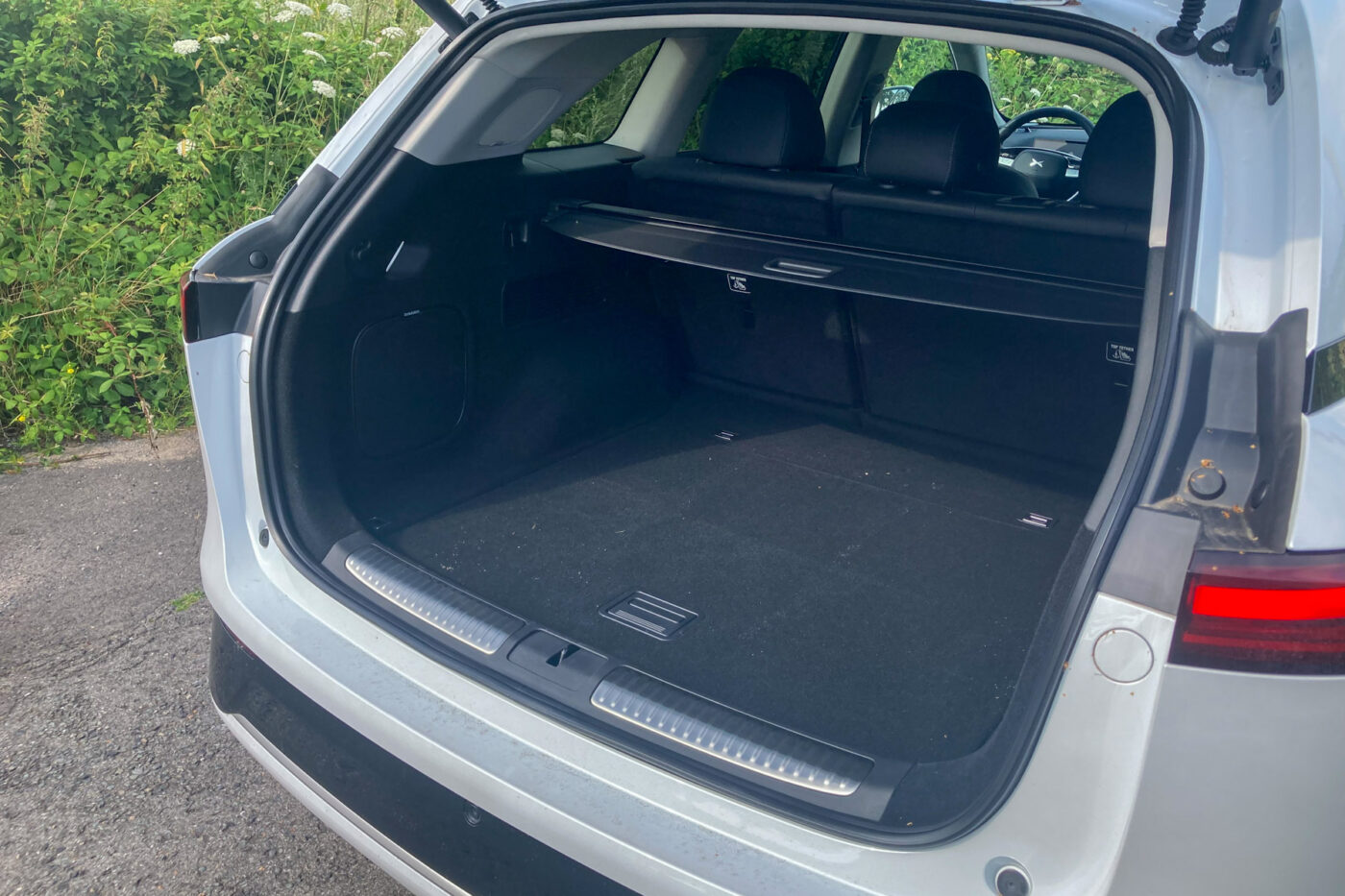
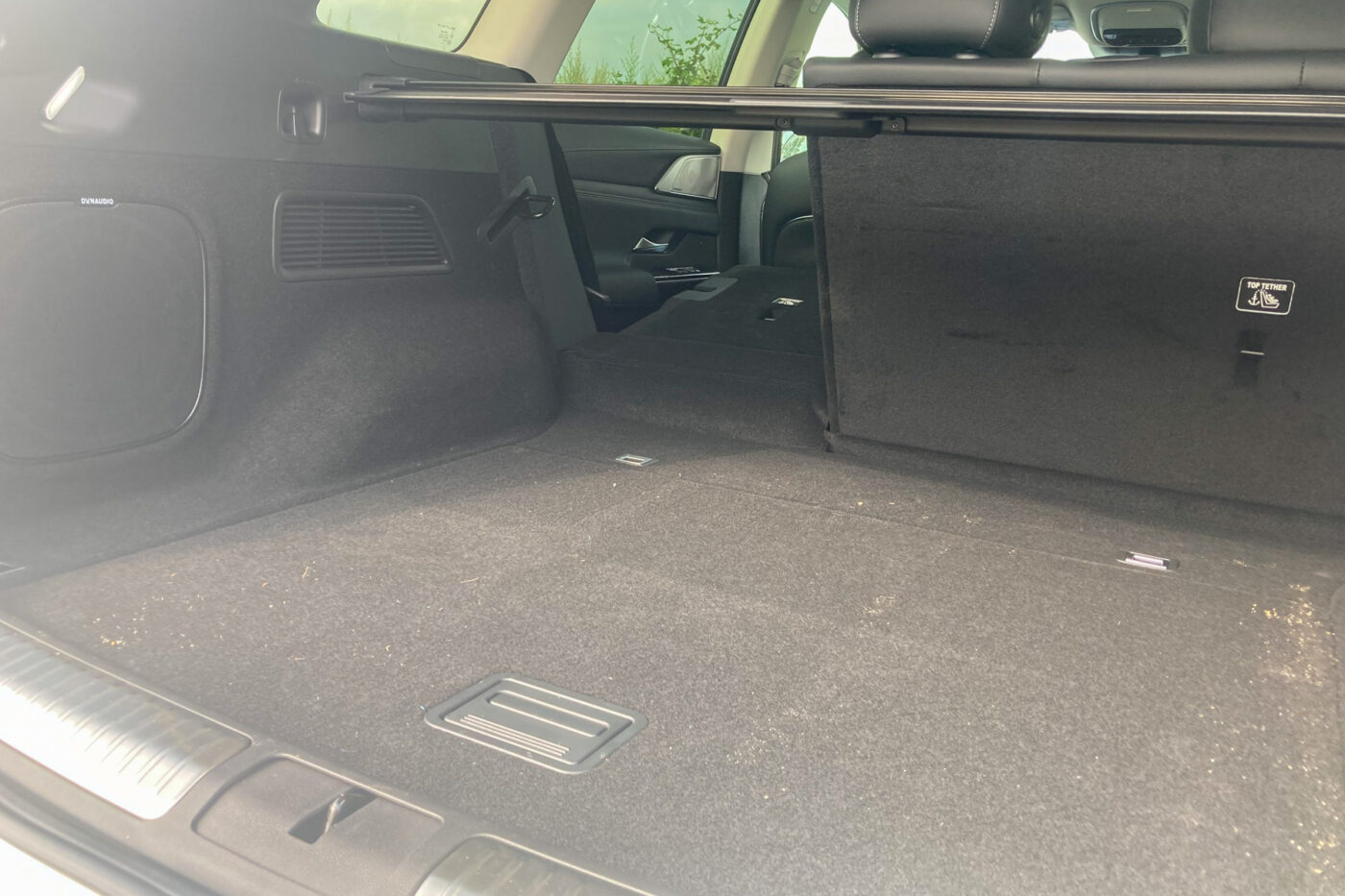
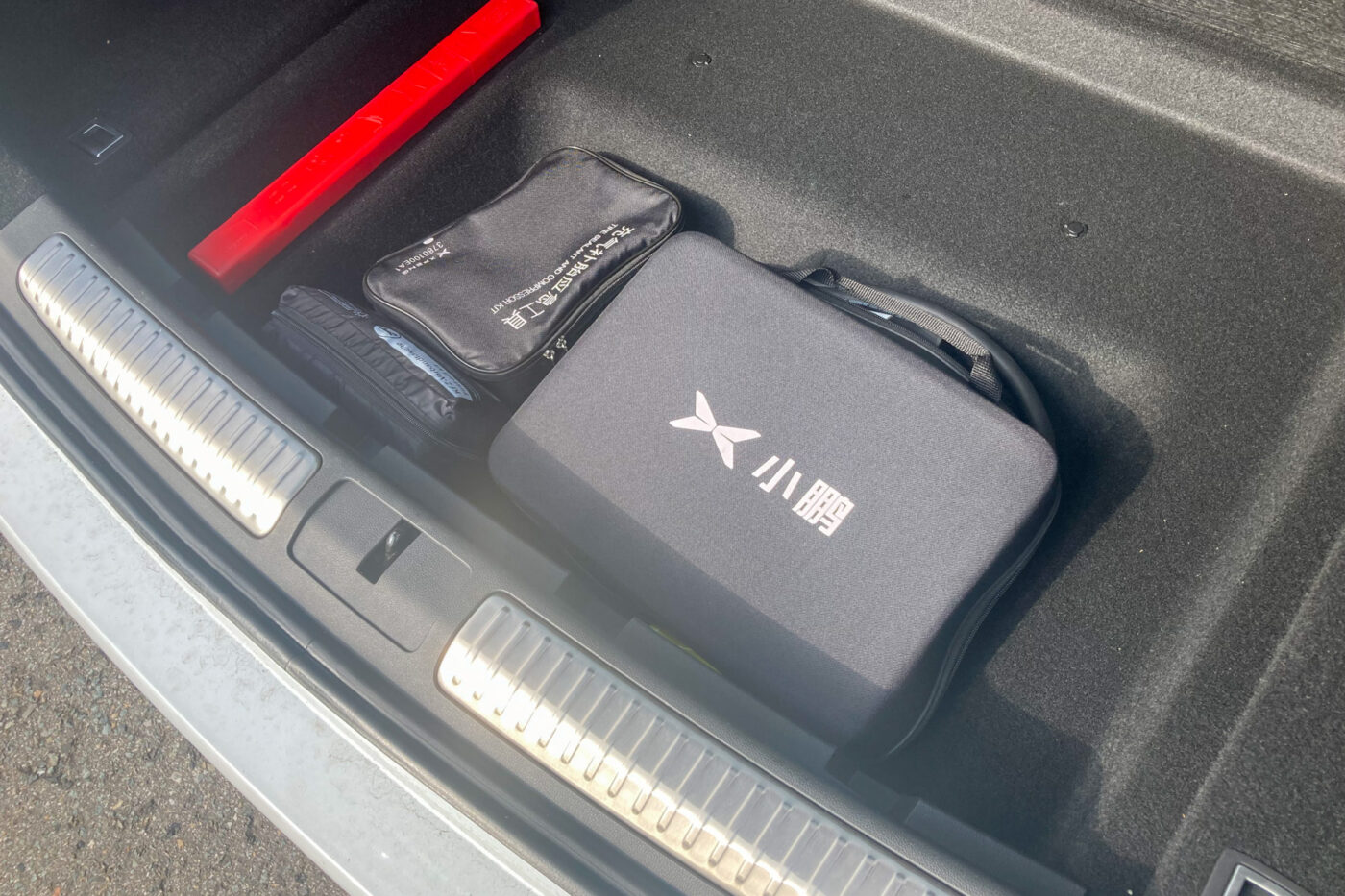
The Xpeng also offers several practical storage compartments – I don’t include the compartment under the free-floating centre console here, as it is barely accessible while driving. The coolable shelf in the centre console, two inductive charging pads for smartphones (even if the material seemed somewhat susceptible to small scratches and may not look good after a few years), and the storage compartments in the doors left hardly anything to be desired. In addition to a generous 660-litre boot, there is another storage compartment underneath and a 71-litre frunk under the bonnet. If that’s still not enough, all drive variants can tow (braked) trailers weighing up to 1,500 kilograms.
After two weeks of testing, the impression of the software and controls was overwhelmingly positive. There are two 15-inch touchscreens in the centre and front of the front passenger – incidentally, the front passenger’s screen is mirrored so that the driver cannot see any content from his seat. The front passenger can, for example, watch a film (there is also the option of connecting Bluetooth headphones) or use the screen to conveniently change the navigation destination, search for a suitable charging stop or select the desired playlist. Xpeng has also integrated one or two gadgets: A beauty app on the passenger display can be used to adjust the light colour of the LED around the make-up mirror in the sun visor.
Xpeng also invested time in the relevant functions. The menu structure is logically organised – you just have to get used to which functions are actually called up via the menu on the left-hand side and which via the quick selection overview (swipe down once). A button would perhaps be useful for one or two functions (such as those relating to the headlights), but overall, Xpeng has done a good job with its user interface. The system runs quickly and smoothly anyway. The entire vehicle and infotainment can be kept up-to-date with over-the-air updates – for example, the currently unavailable integration of Apple Carplay and Android Auto is still to follow.
Conclusion
The Xpeng G9 offers a very good technical basis for success in Europe – even details such as the hidden rear windscreen wiper are well-designed. The drive is contemporary, and only significantly more expensive models, such as a Porsche Taycan, can keep up with it when it comes to fast charging. There is still some fine-tuning with the assistance systems, but this can be done via a software update. Overall, the G9 offers many features of more expensive premium models but is priced close to the volume segment.
Xpeng has thus hit the ground running with this vehicle. However, factors such as sales and service will also be decisive for market success. After all, despite the high charging capacity, the manufacturer has high expectations of its battery: there is an eight-year warranty on the high-voltage battery and seven years or 160,000 kilometres on the vehicle.

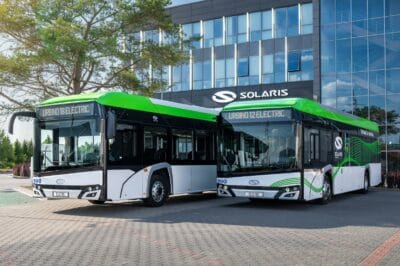
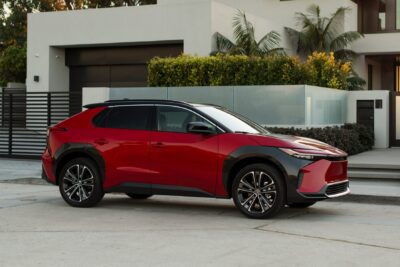
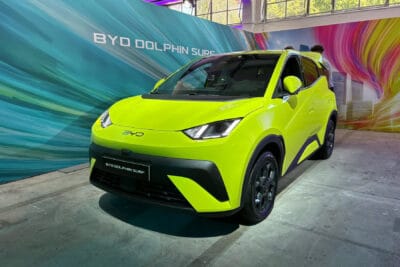
3 Comments